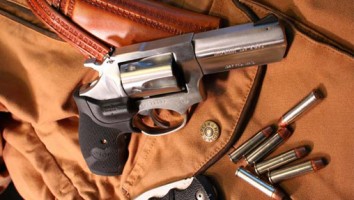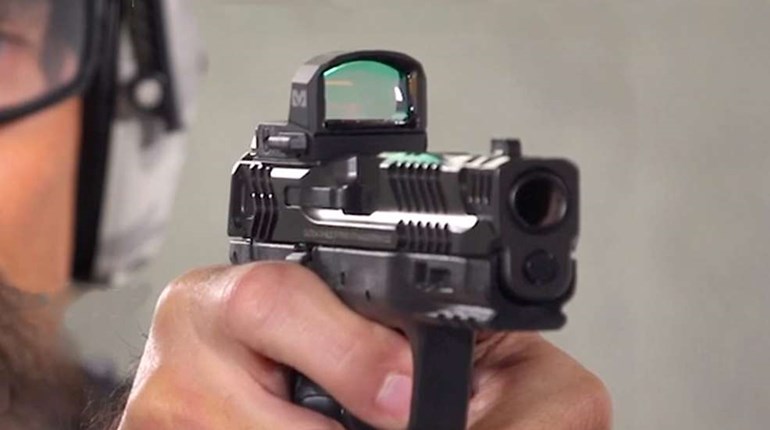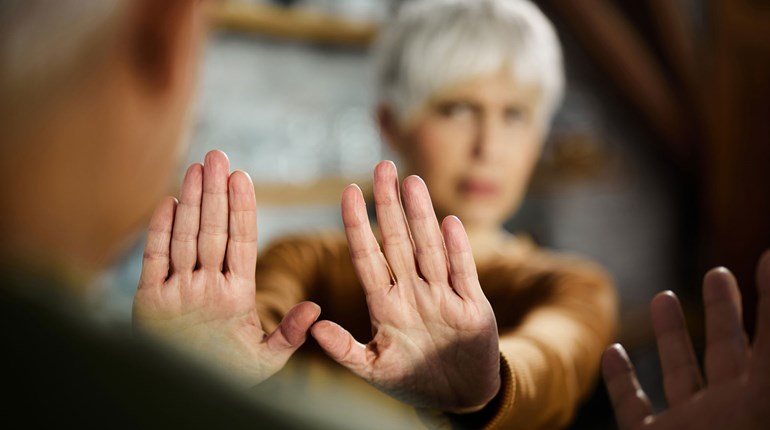
Short-barreled revolvers are known for being notoriously inaccurate. In truth, they're not inaccurate; they're just difficult to shoot accurately. The difficulty comes from the short sight radius. My grandpa called snubbies two-hand guns. Not because you held them with two hands but because he thought you should hold onto the bad guy with one hand and shoot him with the other.
Snub-nose, double-action-only revolvers are selected for defensive carry because of their reliability and compactness, not because they're easy to shoot accurately. The key is learning to control that long, heavy, double-action trigger pull. The best way I know to master this skill is with dry-fire practice.
Take a for sure unloaded gun, pick a spot on the wall, and learn how to pull the trigger without disturbing the sights. Start by pulling the trigger slowly while keeping the sights aligned. Speed up your trigger pull as you begin to see improvement. It needs to become as natural as picking your nose. If you dry-fire practice 50 trigger pulls every night for 20 nights, you will begin to see a dramatic improvement on the range.
Follow this up with another 20 days of handgun presentation practice. Again, be sure the gun is unloaded. Start with your hands normally at your side and draw the revolver from the holster or pocket, depending on your carry method. Once the gun is out, dry-fire a single "shot" at your wall target. Do this at least 50 times per day. Drawing and triggering a single "shot" within two seconds is a good goal to strive for.
After you're sick of dry-firing, go to the range. Set silhouette targets at 3, 5 and 7 yards, and staple a sheet of paper over each kill zone. Start with slow fire at 3 yards and practice until you can keep all your shots on the paper. Then move to the 5- and 7-yard targets. When mastered at a leisurely pace, start over and speed up. As a goal, strive to get five or six hits at 7 yards in 5 or 6 seconds. When you can do this, fold the paper in half and start all over.
Next, include drawing the revolver. Start the drill with the handgun holstered or otherwise secured as you intend to carry it. Work slowly at first. When you can get your five or six hits in 5 or 6 seconds—including the time it takes you to draw the handgun—fold the paper in half and start over again.
As you progressively get better, try the same training progression, but use only your strong hand. When you find you can complete the drill in the same amount of time with your strong hand only, try some hip shooting at targets 2 yards and closer. Hip shooting is an important skill to master at these distances because you should avoid sticking your handgun out to where you attacker can grab it or take it away. A trick to hip shooting is to draw to the same point every time, locking your gun arm tight against your body. Adjust your aim by rocking at the hips as opposed to twisting your wrist or arm.
Once you progress to the point where you are getting hits at a relatively fast pace, training with a short-barreled revolver is really no different than training with any other defensive handgun. Add in reloads, movement, weak-hand drills and so on. The trick is learning to work through that long and usually heavy double-action trigger pull without disturbing the sights. Dry-firing is the place to start.





































